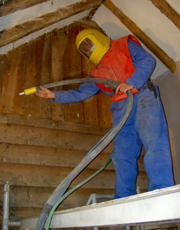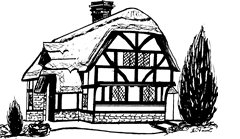The process
The abrasive blasting principle
For those who have never encountered abrasive blasting before, I will endeavour to explain the principle. At its most basic level, it is a jet of high pressure air emerging from the end of a hose pipe, into which a steady flow of dry abrasive is introduced. The result is an abrasive jet of air that can be directed ‘at will’ against timber, stone, brick or steelwork. This is a highly efficient way to remove paint, varnish, stain or rust.
There are many makes of machines on the market and they all work on the same principle. The variation in performance and application however, is completely in the hands of the operator.

The relevant considerations
- The type of abrasive used
- The power of the air supply (i.e. compressor size)
- The size of the jet nozzle used
- The ratio of air to sand
- How close the nozzle is to the work being stripped
- Most importantly, the angle and direction of the blasting
All of these factors are variable and are altered according to the effect required. So, if you are removing many layers of paint from heavy steelwork, you would use very course grit with very high pressure to get the most powerful stripping action, knowing that you cannot damage the steel, no matter how long you blast it. This is Grit/Shot Blasting.
Alternatively if you are stripping stain or varnish from carved antique oak, you would use very fine sand and much lower pressures, always working at an angle that allows full vision and a delicate touch to achieve the desired effect. This is ‘Sympathetic Sandblasting’.
It is a fact that there are many operators with abrasive blasting equipment, who are dealing every day in the Shot blasting industry and steelwork. I think that this method of working should be regarded absolutely separate from that which is required in Period properties. A completely different approach is needed. Working in a building demands that an operator is sympathetic to the history and fabric of the building, but that he also needs an ‘artistic eye’ for the finish. Which is the most important tool to be used.





